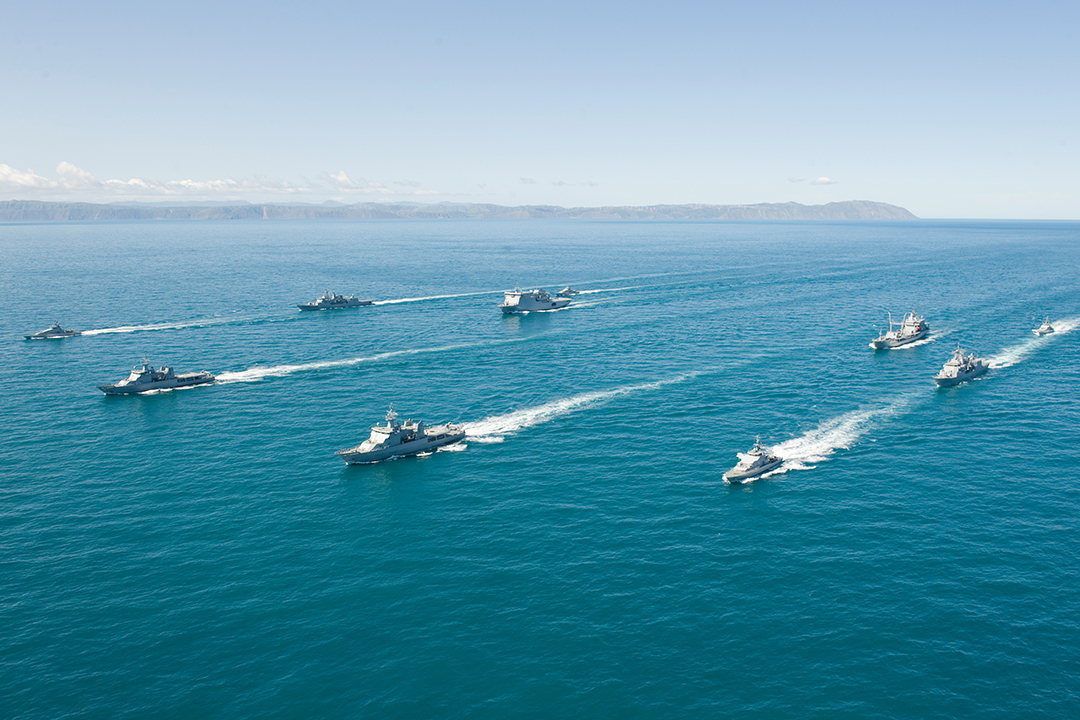
According to an analysis by Ivan Kirichevsky, Russia is seeking to get large order from China towards the supply of arms towards its stated to goal to invade and “unify” Taiwan.
But if Beijing was to act on its rhetoric to invade Taiwan, it would have a significant impact on the global chip supply chain among other trades impact which are likely to “fall apart”. Russia is likely to “weigh” its financial “airbag” against a potential Chinese invasion of Taiwan along with its potential annexation of Ukraine.
There is increased speculation that both, China and Russia could “synchronize” their attempt at annexing Taiwan and Ukraine, hoping to place the US into a “two-front war”.
The likelihood of this playing out could reduce given the following two incidents:
- On October 19, 2021, the PLA Eastern District Command “lit up” several dozen old Shenyang J-6 fighters, which essentially are copies of the Soviet MiG-19, which flew into Taiwan’s Air Defense Zone to “probe” and break into Taiwan’s air defenses.
- On November 19, 2021, Taiwan launched an upgraded supersonic Yun Feng cruise missile which has a reported range of up to 1,500 km, and which could destroy targets deep into China’s “mainland”.
This balancing act by Taiwan has forced Beijing to look for a new “miracle weapon” through which it could gain a decisive advantage over Taiwan.
If one were to ask to what extent can Moscow ready itself to synch with a potential attempt by China to invade Taiwan, the answer probably lies in the publication of a Russian journal – “Center for Analysis of Strategies and Technologies” which was published on November 26, 2021.
According to the author of this Russian publication, it is unlikely that Moscow will publicly support the Chinese invasion of Taiwan. At best, Moscow is likely to take a “neutral” stance and issue out statements equivalent to saying the world “respect for China’s territorial integrity”.
While Russia is likely to benefit from such an attack in terms of weapon supplies to the PLA, but it is also very likely that Moscow may not be very enthusiastic about the PLA’s attempt to invade and annex Taiwan since the attack will break and result in significant restructuring of the chip supply chain network and severely disrupt the logistics of global trade, leaving Russia without the financial “airbag” required to annex Ukraine.
The publication of this Russian opinion gains significance since under authoritarian regimes, the concept of freedom of expression is zero, which means the publication of this report by a Russian journal is reflective of Russia’s political and military leadership.
The Russian author also outlined the “political” framework through which the PLA could attack Taiwan and provided a hypothetical format of Chinese aggression on Taipei. This model can be considered valuable since it could be used by Russia on Ukraine as well.
The author of the Russian publication has made an assumption that the PLA’s attempt at invading Taiwan is likely to be between 2022 to 2024.
It is also possible that Taiwan’s elite, which tends to lean towards China’s “one-country-two-regime” rhetoric, could force the issue through democratic elections.
Taiwan has undertaken re-armament programs aimed at giving more teeth to its armed forces through the purchase of US Abrams M1A2T tanks, F-16 fighters planes and through the construction of corvettes, its armed forces number only 187,000 personnel and in many areas Taipei lags behind tactical advantage over mainland Chinese troops.
Taiwan has also systematically invested in the development of its Special Operations Forces and has created a strong “deep state” whose very existence makes impossible for any potential “hybrid” annexation, such as Russia’s annexation of Crimea in 2014.
This leaves China with the only option of a full-scale war if it decides to invade and annex Taiwan.
In such a potential scenario, the PLA, under the guise of a large-scale maneuvers, could begin its aggression on Taiwan through airstrikes and missile launches and try to establish a naval blockade.
Taiwan’s military-political leadership has factored in such an invasion and has come with counters which includes preserving its armed forces and launching naval battles aimed at taking the fight to the Chinese mainland.
According to the author of the Russian journal, the PLA is interested in buying the full range of offensive weapons from Moscow for its aggression on Taiwan, this includes the purchase of guided missiles, Electronic Warfare systems, combat helicopters, combat ships, landing ships, etc.
A lot will depend on how Beijing will pitch, in bureaucratic terms, its request for the purchase of Russian weapons.
At this juncture the author makes another assumption – the Russian military-political leadership has not formed an unambiguous attitude to the potential Chinese invasion of Taiwan.
In the event China choose to buy large scale Russian weapons, which Moscow is likely to agree to since the prices of such exports are not volatile and unlike raw materials are not subject to heavy fluctuations as a result of which they are largely a source of steady income, Russia could play its neutral act and indirectly support China given the economic benefits.
On the other hand, the PLA could launch its invasion plan without approaching Russia for weapons. In such an event, Russia has more to lose given that such an attempt by China could send shockwaves and realign global supply chain which are likely to significantly impact Russia’s treasury.
Thus, the security scenario in the Pacific in the region surrounding Taiwan appears to be intricately linked to Ukraine’s national security.
The more there is data on Russia’s position on the PLA’s plan to launch an attempt to invade and annex Taiwan, the greater will the West have “room for manoeuvrability” towards both aggressors.





